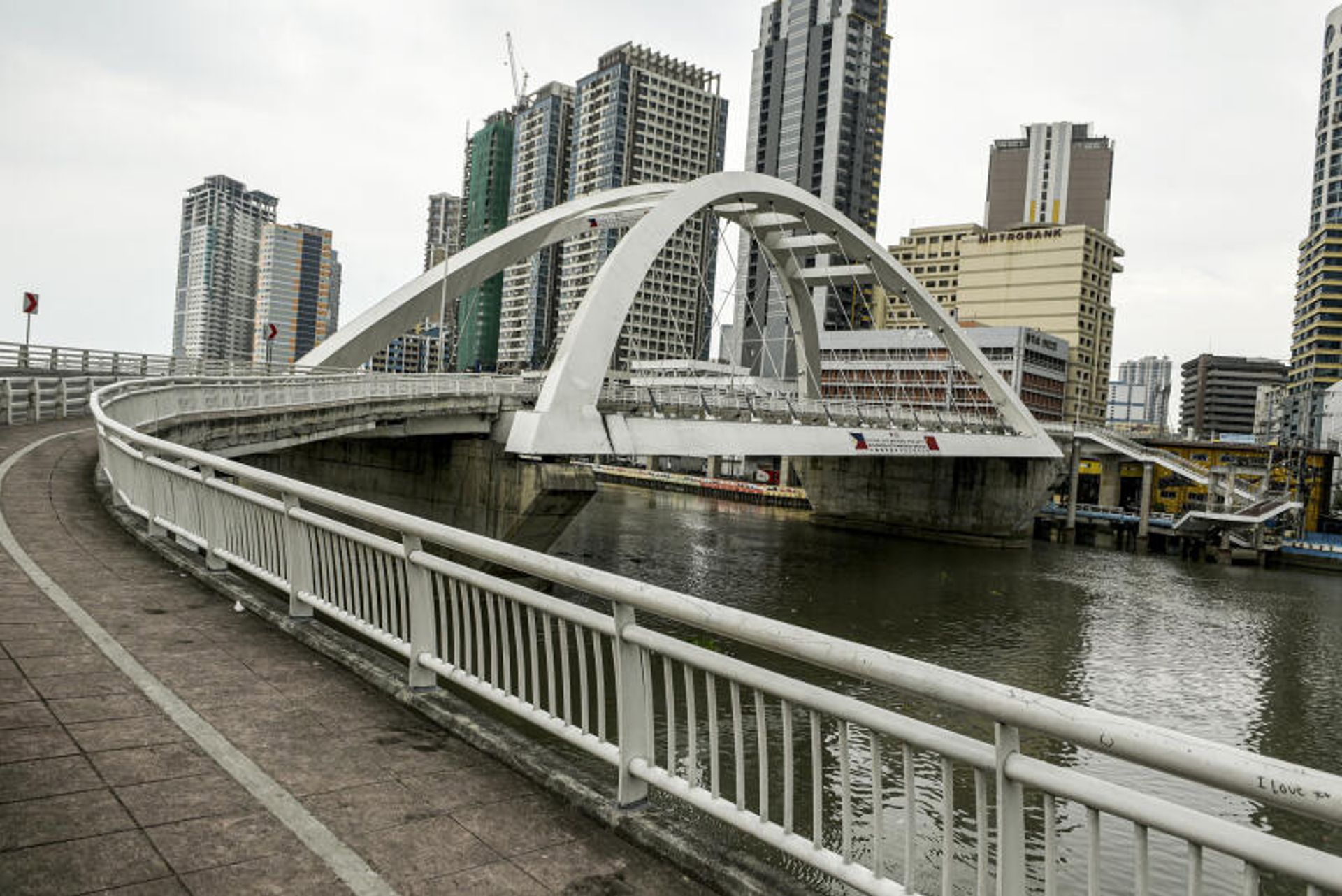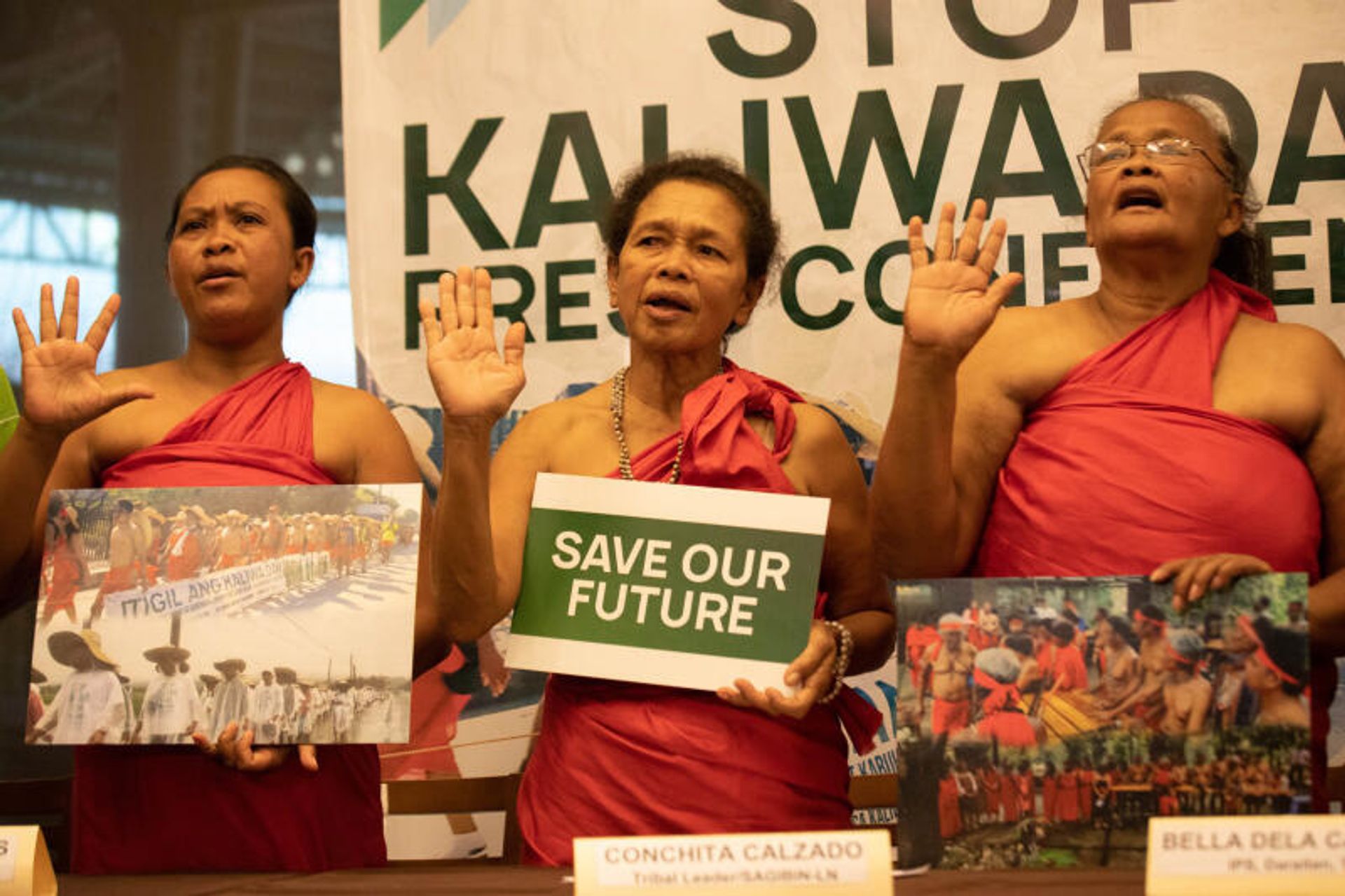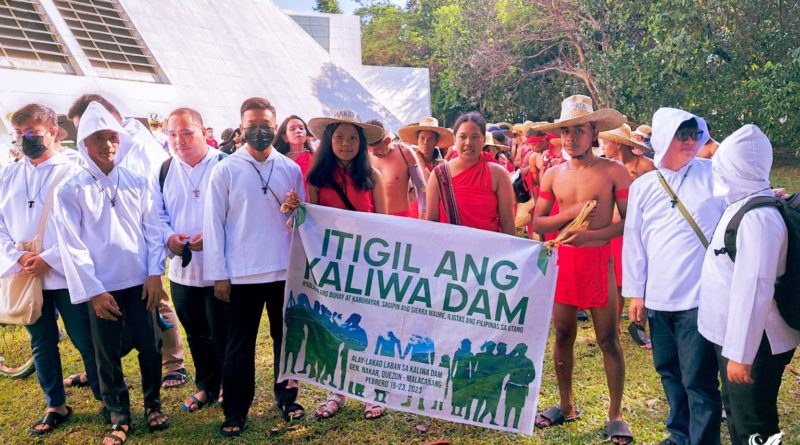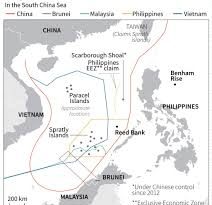HEADLINE-ECONOMY | Kaliwa Dam Project: Stalled new dam, a China-funded projects threatens Filipino tribe.
A new dam threatens this Filipino tribe. It’s just one of the country’s stalled China-funded projects
.
.
Manila’s pivot to Beijing during the previous administration yielded more than a dozen infrastructure deals, but most of them remain mired in delays and protests. Insight examines the obstacles and what it will take to revive these projects.
RIZAL, Philippines – At the heart of the Sierra Madre mountain range in the Philippines lies a quaint village where people live in bungalows made of wood and concrete along the banks of the pristine Agos River.
Located 62km north-east of the capital Manila, Daraitan village in Rizal province is home to about 5,700 residents, a majority of whom are members of the Dumagat-Remontado indigenous people who consider vast hectares of the mountain range as part of their ancestral domain.
Generations of the tribe have lived off the river and its surrounding forests, which have provided them with food, shelter and medicine. Once a year, they come together to perform their sacred healing rituals using the giant marble boulders found along the riverbanks. These rock formations also make a favourite photo spot for tourists.
But the village may soon disappear under the same waters that give it life, once the Philippine government finishes building the Kaliwa Dam – one of 16 flagship infrastructure projects of former president Rodrigo Duterte that is being funded by China.
Construction for the Kaliwa Dam Project is ongoing
“We are opposing the dam because our ancestral lands are important to us. This is where we grew up. This is our home. If the dam is built, where will our future generations go?” said 61-year-old Dumagat-Remontado elder Nelly dela Carzada.
The Philippines has been pushing to create this dam since the 1970s in a bid to ensure water supply for Metro Manila, the country’s densely populated capital region composed of 16 cities and one town located some 65km downstream.
Several Metro Manila communities have experienced water shortages in recent years, due to a mix of issues like overpopulation, poor urban planning and climate change.
Most of the region’s current water supply comes from the Angat Dam, which provides some 4,000 million litres of water a day and is located about 85km north of where Kaliwa Dam is being constructed.
The new dam is expected to provide Metro Manila with an additional 600 million litres of water daily once it is finished by end-2026. Officials said building the 60m-high reservoir is even more necessary now that the country is starting to feel the impact of the El Nino weather phenomenon.

But it was only in 2021 under Mr Duterte that construction finally broke ground, three years after Manila and Beijing signed the 12 billion peso (S$288 million) loan agreement.
The Kaliwa Dam was among the 119 flagship projects in the Duterte government’s ambitious “Build, Build, Build” infrastructure programme, which officials said were needed to help generate jobs and spur economic development.
Of the 119 on the list, Mr Duterte turned to China to finance 16 big-ticket projects in a bid to cement his legacy by the time his presidency ended in 2022. He embraced Beijing during his term and even downplayed Manila’s claims in the disputed South China Sea in favour of securing loans and grants from China.

But two years after his presidency ended, only about a dozen of his 119 priority infrastructure projects were completed. Of the completed projects, four were funded by China: the Chico River Pump Irrigation Project that now provides water to more than 8,700ha of agricultural land in northern Philippines, two bridges in Metro Manila and the first phase of the 17km bypass road in Mr Duterte’s home town of Davao City in the south, with the bridges and road meant to ease traffic congestion. While these projects faced controversies like many of the other projects did, they were prioritised because it was realistic to finish them within Mr Duterte’s term.

Analysts have criticised Mr Duterte’s infrastructure programme as ambitious. Perennial domestic issues like local politics, right-of-way acquisition problems, lack of technology and red tape in bureaucracy led to severe delays in the projects.
The same issues hound the China-funded projects – which come under Beijing’s Belt and Road Initiative (BRI) to build infrastructure in developing nations – with the problems made more severe by Beijing’s high interest rates in its loan agreements and local backlash due to displacement of residents or potential environmental damage.
“The delays are in large part domestic in nature… Because you may have all this access to financing, especially when relations (with China) were good, but if you cannot institute reforms to speed up the process, then you will not be able to make the most out of it,” said foreign policy expert Lucio Pitlo III, research fellow at the Asia-Pacific Pathways to Progress Foundation in Manila.
Mr Duterte also turned to China for funding of certain controversial projects because Beijing tends to be less stringent about meeting social and environmental standards, compared with other funders like Japan or the World Bank, said Chinese investments expert Alvin Camba, an assistant professor at the University of Denver’s Josef Korbel School of International Studies.
“The Chinese government tends to accept funding a project if it’s important geopolitically because they’re trying to win over the local government in power or if it’s important commercially for Beijing,” he said.
Adding to the difficulties faced by the China-funded projects is the rising geopolitical tension between the two countries as current President Ferdinand Marcos Jr focuses more on Manila’s dispute with Beijing in the South China Sea.
The Straits Times contacted the Chinese Embassy in Manila for comment, but it declined to respond.
While four out of 16 major projects completed within Mr Duterte’s term is not a poor outcome, the other 12 projects involving the Chinese are facing delays or in limbo for myriad reasons, from local ones like political, socio-economic, cultural and environmental issues to geopolitical ones, some of which also plagued earlier projects. Some of the solutions suggested include aborting potential white elephants and completing some of the projects important to the country’s economic development by looking beyond China for funding.
But it appears that China’s BRI romance with the Philippines is dead in the water for now.
The most common type among the 16 China-funded projects are bridges and roads, followed by railways and water facilities.
Missed opportunity
In the past decade, China spent trillions of dollars through its BRI to develop economic ties and expand its influence in Asia, Africa and Latin America by helping countries in these continents finance and build infrastructure needed for economic development such as roads, railways, bridges, dams, ports and industrial hubs.
Critics say the BRI has been detrimental in the long run to some recipient countries, especially those that have been unable to repay their loans, like Sri Lanka and Zambia.
China imposes a higher interest rate of at least 2 per cent, compared with the less than 1 per cent of other lenders like Japan, the Asian Development Bank or World Bank. Beijing’s contracts often have strict confidentiality clauses and would push for Chinese contractors to work on the projects.
But nations have benefited too. The China-funded Phnom Penh-Sihanoukville Expressway has reduced travel time for drivers between the two Cambodian cities from five hours to two hours. Indonesia opened its long-delayed bullet train connecting Jakarta to Bandung, also funded by Beijing, in October 2023.
The Duterte government’s failure to take advantage of its BRI loans was a “missed opportunity” for the Philippines, said foreign policy analyst Jerik Cruz, a graduate research fellow at the Massachusetts Institute of Technology.
He contrasted Indonesia’s China-funded high-speed rail to the three long-delayed major railway projects in the Philippines that China initially agreed to fund under Mr Duterte. Mr Marcos halted negotiations with Beijing for these projects in 2023 because talks had not progressed for months. The Philippines is now exploring other funding partners.
“It certainly may have been possible for the Philippines to have secured more favourable terms for its projects as well, but it looks like political pressure from the top to negotiators in hammering out the loan agreements for these deals weakened our ability to extract conditions for the projects comparable to what Indonesia received,” said Mr Cruz.
More than 530 billion pesos (S$12.7 billion) in projects such as bridges and roads, railways and water facilities.
A political tool
The four completed China-funded projects under Mr Duterte were controversial too. But they came to fruition because they had the support of local politicians allied with Mr Duterte and therefore increased his political capital, said Dr Camba.
“I think that the calculus of the Duterte government on projects was really less about building good projects so they could help people. I think the calculus of the Duterte government was really to use these projects to increase political power,” he said.

In the case of the Chico River Pump Irrigation Project, local politicians in northern Philippines supported it despite protests from indigenous groups and environmentalists because the project pumps water to some 8,700ha of agricultural land and benefits about 4,350 households. This gave Mr Duterte an incentive to push through with the project to keep the support of the political elites, said Dr Camba.
“There was clear local elite consensus on the project, and therefore the government there got the project done and built it fast,” he said.
The four projects were also prioritised both by China and Mr Duterte because they would be completed within the latter’s six-year term, said Mr Pitlo.
“In the case of China, I think that’s also one consideration. In the Philippines, no big-ticket project ever gets completed in a single administration… We cannot provide a sense of continuity, especially for long-term projects,” he said.
A tribe divided
The political calculations of the Duterte administration beyond the developmental goals for building infrastructure are evident to the Dumagat-Remontado tribe affected by the Kaliwa Dam project. The tribe’s leaders feel they were left out in the cold by the Duterte government for the sake of strengthening local political influence and its own alliance with China.
The dam project will cover 291ha of the Kaliwa Watershed Forest Reserve, including the Dumagat-Remontados’ ancestral domains across the adjacent provinces of Rizal and Quezon.
Tribal leaders said they were not properly consulted regarding the project that threatens their traditional way of life. Environmentalists from the Stop Kaliwa Dam Network also say the project would destroy 126 species of flora and fauna in the Sierra Madre.
The Philippines’ Indigenous Peoples’ Rights Act states that the government must first secure a tribe’s free, prior and informed consent before building on its ancestral lands.
But Ms Clara Dullas, one of the leaders of the Dumagat-Remontado in Rizal, alleged that the Duterte government had either misinformed or pressured other tribe members into giving their consent.
She could not bear to hold grudges, though, noting that the Dumagat-Remontado organisations that eventually agreed to the Kaliwa Dam were each given 80 million pesos, or $1.9 million, in “disturbance” fees.
“The Kaliwa Dam is the reason why our tribe is divided now. There is a crack in our relationships even if we all come from the same family,” said Ms Dullas. “I can’t blame the others because we lack money. I believe there was bribery involved.”
But Metropolitan Waterworks and Sewerage System (MWSS) spokesman Patrick Dizon said the consultation process was above board and was duly certified by the National Commission on Indigenous Peoples (NCIP).


“A testament to that is the issuance of the certificate precondition by the NCIP for the social component and the issuance of the Special Agreement on Protected Area by the Department of Environmental and Natural Resources,” he said.
The Kaliwa Dam is only about 23 per cent completed as at December 2023, said Mr Dizon. But the tribe said it has already become more difficult to access its lands that are close to the construction areas.
The government requires them to present identification documents, and only those given passes may enter. Mr Dizon said this is to ensure that no unidentified personnel enter the area.
But the Dumagat-Remontados are angered by the policy.
“We feel like we are foreigners in our own home because the Chinese and the people in our own government are now preventing us from entering the lands where we grew up,” said tribe leader Renato Ibanez, 48.
Mr Ibanez also accuses the Philippine authorities of harassing tribe members who are vocal against Kaliwa Dam. Some of them have been accused of working with communist rebels, a charge the tribe vehemently denies.
“Our leaders have experienced being investigated by the authorities. But why? This is our land,” Mr Ibanez said.
Uncertain future
There has also been resistance to some of the Duterte-led, Chinese-funded infrastructure projects in other parts of the country.
In Manila, local lawmakers in the capital’s fifth district delivered speeches before the city council in June 2023 to protest against the planned North and South Harbour Bridge. The 2km bridge aims to connect two villages – Barangay 20 and Barangay 649 – which are located on either side of the Pasig River, to help ease traffic in the capital.
But the bridge would displace more than 1,300 urban poor residents and would even lead to the demolition of a public school in the area locals call the Baseco Compound. Displacement of urban poor residents is often a touchy subject in the Philippines, as the government usually proposes moving them to provinces outside Metro Manila owing to lack of land. The relocation sites usually have poor living conditions and are far from the residents’ sources of livelihood.
“This bridge is unnecessary, a waste of money and a big inconvenience to the people,” said Manila Fifth District Councillor Jaybee Hizon, adding that the nearby R-10 Bridge had already been developed to address the traffic congestion the North and South Harbour Bridge was supposed to fix.
The city council was supposed to hold hearings on the China-funded bridge proposal, but these did not take place. No construction has begun on the bridge as at January 2024.
In southern Philippines, construction of the 23.4 billion peso Samal Island-Davao City Connector Bridge project has also been halted because of the government’s failure to acquire land needed for the bridge.
Some local stakeholders are not necessarily against the bridge per se, but have claimed they were not properly consulted about its location, while other groups have questioned its compliance with environmental standards.
Upon being elected in June 2022, Mr Marcos ordered a general review of the pending Chinese investment projects his government inherited from Mr Duterte, in a bid to renegotiate terms.
Unlike his predecessor, Mr Marcos is more aggressive in defending Manila’s overlapping claims with Beijing in the South China Sea, but still fosters economic ties with it.
Geopolitical tensions between the two nations and Mr Marcos’ stance towards Beijing are going to dictate the fate of the pending China-funded projects the President inherited from Mr Duterte, said Mr Cruz.
“Geopolitics certainly played a part in securing China’s role in the China-funded projects, and geopolitics is again rearing its head with respect to the same projects… The crucial condition that paved the way for this reversal was ultimately the electoral victory of President Marcos, who was far less aligned with China than Duterte,” said Mr Cruz.
The 16 infrastructure projects planned or started during Mr Duterte’s term were carried over into Mr Marcos’ own priority list, which means his administration continues to see the economic benefits of these projects. But it seems he is not as keen as his predecessor to stick with China, and is open to exploring other funding sources.

Socio-economic Planning Undersecretary Joseph Capuno said China has not been proactively pushing for the other pending projects either.
“China was not responding to our request for funding, or they kept saying (they were) still studying them. It seems there’s no finality in their decision, and these are priority projects. If we can identify alternative sources that will speed up the approval, implementation, why not?” Mr Capuno said.
“China is not only the source of funds, especially now,” he added, referencing the tensions with Beijing over the South China Sea.
Dr Camba said these rising tensions between Manila and Beijing have since become a major obstacle to the completion of the projects, giving Mr Marcos “little political incentive” to insist on Chinese funding.

This now presents the Marcos administration a chance to review its loan agreements with China, look for alternative funders for projects worth continuing, and get rid of the so-called white elephants in the infrastructure list.
“Among the projects tagged during the Duterte administration as economically wasteful white elephants in the making are the Mindanao Railway project, the Subic-Clark Railway project, and the Kaliwa Dam project – all China-funded ventures,” said Mr Cruz.
“If the economic rationale for these projects has not been sound to begin with, relative to their prospective future use by the public, and alternative infrastructure options are available to the Philippine government, then why push through with them?”
Mr Pitlo, however, cautioned the Marcos government against completely dropping China as a big-ticket infrastructure project funder. It could turn off other investors, he said.
“I don’t see any incentive for the present Marcos government to discontinue projects that are already under way,” he said, citing the Kaliwa Dam.
“So regardless of whether it’s Japan or China, if the projects have passed the necessary clearances, all the necessary reviews, and they have already complied, I would say just let them continue with the projects. Because this also sends a signal to all investors that the Philippines is a country that honours its words.”

Hopeful but wary
The Marcos government’s open resistance to China in the maritime dispute gives the Dumagat-Remontado tribe some hope that this would one day lead to a rejection of the Beijing-funded dam on its ancestral lands.
Tribe members said they would be more amenable if Mr Marcos would revisit Japan’s proposed Kaliwa Intake Weir project that Mr Duterte had set aside.
Harnessing the same waters that the China-funded Kaliwa Dam is tapping, the Osaka-based Global Utility Development Corporation (GUDC) proposed to build a 7m weir, or low dam, with only a 16km-long tunnel that will have a capacity of 550 million litres a day.
The Japan project’s capacity would be 50 million litres lower than the Kaliwa Dam, but will not submerge large swathes of the Sierra Madre.
The Philippine government would also not be borrowing funds from Japan, as the proposal would be under a 25-year build-operate-transfer scheme. Under this system, the Philippine government would not shoulder construction expenses, but the MWSS would instead pay the agreed water rates to the GUDC within 25 years.
“We like Japan’s proposal. It would not destroy our forests. It would not affect residents here. The Philippines would not be buried in debt,” said Ms Dullas.
This was among the alternatives the Dumagat-Remontados offered during their nine-day march in February 2023, when some 300 members walked 150km from Quezon and Rizal all the way to Manila to protest against the Kaliwa Dam.
But they failed to secure an audience with Mr Marcos. They remain wary of the President’s position on the Kaliwa Dam and other controversial China-funded deals.
“As much as we want to fully pin our hopes on him, we don’t. We’ve learnt from past efforts to trick us, make us believe a project is about to end, only for it to be resurrected again years later,” said Ms Dullas.
“If he really does not want this project from China, we want him to openly declare to stop the Kaliwa Dam. That’s what we are waiting for,” she said.









